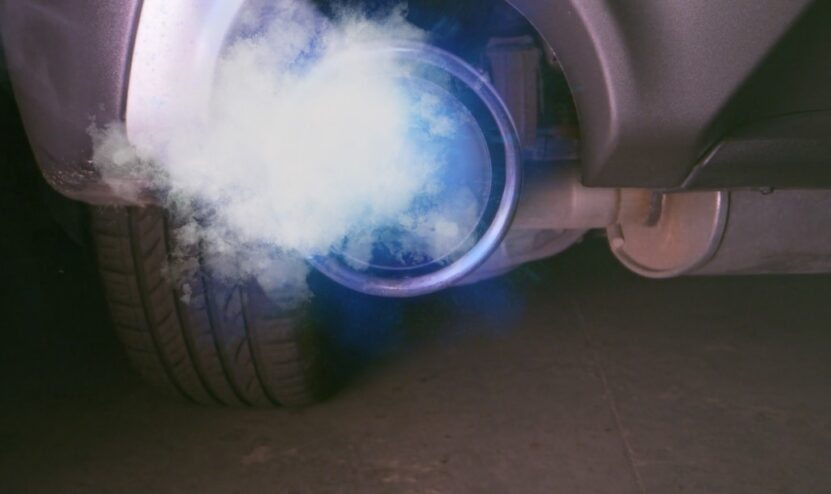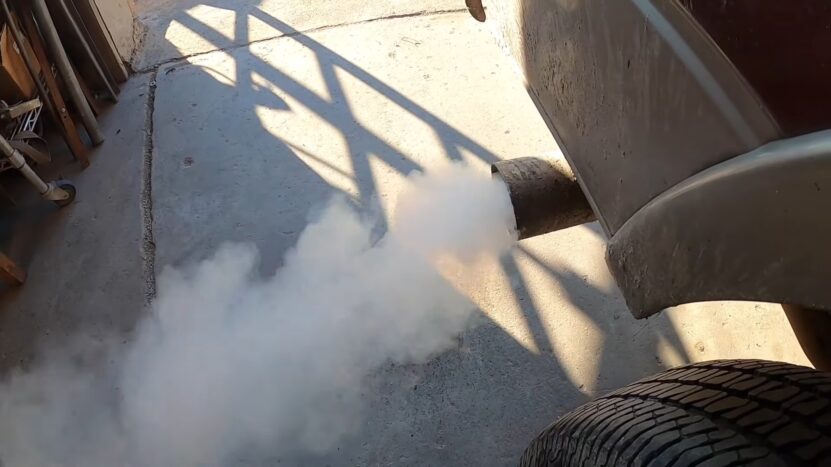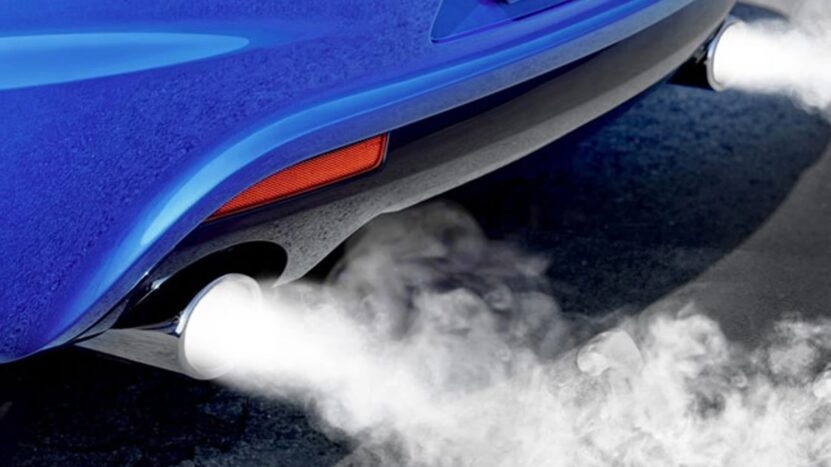Have you ever found yourself staring at a trail of colorful smoke billowing from your car’s exhaust pipe, wondering what could possibly be causing it? You’re not alone. Engine smoke comes in a variety of colors, and each one can indicate a different issue. In this comprehensive guide, we’ll delve into the reasons your car engine might be blowing colorful smoke and the steps you can take to address the problem.
Smoke Signals: Understanding the Colors and Their Meanings
1. White Smoke
White smoke is relatively common and can range from being harmless to an indication of a serious problem. Here are some common reasons for white smoke:
Condensation
On cold mornings, white smoke is often just water vapor that has formed due to condensation in the exhaust system. As your car warms up, this should dissipate quickly.
Coolant Leak
If the white smoke persists and has a sweet smell, it could be a sign of a coolant leak. A faulty head gasket, cracked cylinder head, or damaged engine block can cause coolant to mix with the engine oil, leading to white smoke. This issue requires immediate attention, as it can cause severe engine damage.
Transmission Fluid Leak
For vehicles with an automatic transmission, white smoke may indicate a transmission fluid leak. If the transmission cooler inside the radiator is leaking, the fluid can mix with coolant and be burned in the engine, producing white smoke.
2. Blue Smoke
Blue smoke is usually a sign that your engine is burning oil, which can occur for various reasons:
Worn Piston Rings
Over time, piston rings can wear out, causing oil to leak into the combustion chamber and burn alongside the fuel. This results in blue smoke and reduced engine performance.
Damaged Valve Seals
If the valve seals are damaged or worn, they can allow oil to seep into the combustion chamber, leading to blue smoke.
PCV Valve Failure
A malfunctioning positive crankcase ventilation (PCV) valve can cause excessive oil consumption and blue smoke. The PCV valve regulates pressure in the crankcase, and a faulty one can allow oil to enter the intake manifold.
Turbocharger Issues
In turbocharged vehicles, blue smoke can indicate a problem with the turbocharger, such as a worn seal or bearing, allowing oil to enter the exhaust system.
3. Black Smoke
Black smoke is often a sign of an overly rich fuel mixture, which means there’s too much fuel and not enough air in the combustion chamber. Here are some possible reasons for black smoke:
Dirty Air Filter
A clogged air filter restricts airflow, causing the engine to compensate by using more fuel, resulting in black smoke. Regularly inspecting and replacing the air filter can help prevent this issue.
Faulty Fuel Injectors
Leaking or malfunctioning fuel injectors can cause an excessive amount of fuel to enter the combustion chamber, leading to black smoke. A professional mechanic can diagnose and repair this problem.
Malfunctioning Sensors
The mass airflow (MAF) sensor and oxygen (O2) sensor help regulate the air-fuel mixture. A malfunctioning sensor can cause the engine to run rich, producing black smoke.
Worn Spark Plugs
Worn or dirty spark plugs can cause incomplete combustion, leading to a rich fuel mixture and black smoke.
4. Gray Smoke
Gray smoke can be more challenging to diagnose, as it can result from various issues, some of which are similar to those causing blue or black smoke. Possible reasons for gray smoke include:
Transmission Fluid Issues
As mentioned earlier, a transmission fluid leak can cause white smoke. However, in some cases, it may also result in gray smoke, especially if the fluid is burning in the exhaust system.
Restricted PCV System
A restricted PCV system can cause excessive crankcase pressure, leading to oil leaks and gray smoke. Regularly checking and cleaning the PCV valve and related components can help prevent this issue.
Failed Fuel Regulator
A malfunctioning fuel pressure regulator can cause too much fuel to enter the combustion chamber, resulting in gray smoke. A professional mechanic can diagnose and replace a faulty fuel pressure regulator.
Stuck Fuel Injector
A fuel injector that is stuck open can cause gray smoke due to excessive fuel entering the combustion chamber. This issue requires immediate attention, as it can lead to severe engine damage.
Additional Insights

Fuel Quality
The quality of the fuel you use in your car can have an impact on the type of smoke produced by your engine. Low-quality fuel can cause incomplete combustion, leading to black or gray smoke. To avoid this, always use fuel from reputable gas stations and stick to the octane rating recommended by your vehicle’s manufacturer.
Engine Oil Quality and Viscosity
Using the incorrect engine oil or an oil with a lower viscosity than recommended can lead to increased oil consumption and blue smoke. Always refer to your owner’s manual for the correct oil type and viscosity for your vehicle.
Engine Temperature
High engine temperatures can cause various types of smoke to appear. Overheating can result in coolant leaks and white smoke, or it can cause oil to break down, leading to blue smoke. Regularly monitor your engine’s temperature and address any overheating issues promptly to prevent further damage.
Exhaust System Issues
Problems within the exhaust system can also contribute to colorful smoke. A cracked or damaged exhaust manifold, for example, can cause exhaust gases to mix with engine oil, leading to blue smoke. Similarly, a clogged catalytic converter can cause poor engine performance and black smoke. Regular inspection and maintenance of your exhaust system can help prevent these issues.
Ignition Timing
Incorrect ignition timing can cause incomplete combustion, leading to black or gray smoke. In some cases, this can be caused by a worn or damaged distributor cap, rotor, or ignition coil. Regularly inspecting and maintaining your vehicle’s ignition system can help ensure proper timing and prevent smoke issues.
What to Do when Your Car Engine Is Blowing Colorful Smoke

1. Don’t Ignore the Signs
While some instances of engine smoke may be benign, others can indicate severe problems that require immediate attention. Ignoring these signs can lead to costly repairs or even complete engine failure.
2. Consult Your Owner’s Manual
Your car’s owner’s manual can provide valuable information on diagnosing and addressing engine smoke issues. Familiarize yourself with the recommended maintenance schedule and follow it to prevent future problems.
3. Seek Professional Help
If you’re unsure about the cause of your car’s colorful smoke or lack the necessary skills to diagnose and fix the problem, consult a professional mechanic. They can accurately diagnose the issue and recommend the appropriate course of action.
4. Perform Regular Maintenance
Preventative maintenance is key to keeping your car in good condition and avoiding engine smoke issues. Regular oil changes, air filter replacements, and spark plug inspections can go a long way in maintaining your engine’s health.
Final Words

Colorful smoke coming from your car’s exhaust is not something to be taken lightly. It can indicate a range of issues, from simple condensation to more serious problems like coolant leaks or oil burning. By understanding the different types of smoke and their causes, you can take the necessary steps to address the issue and keep your engine running smoothly. Remember to consult a professional mechanic if you’re ever in doubt, and always adhere to your vehicle’s recommended maintenance schedule to prevent future problems.

